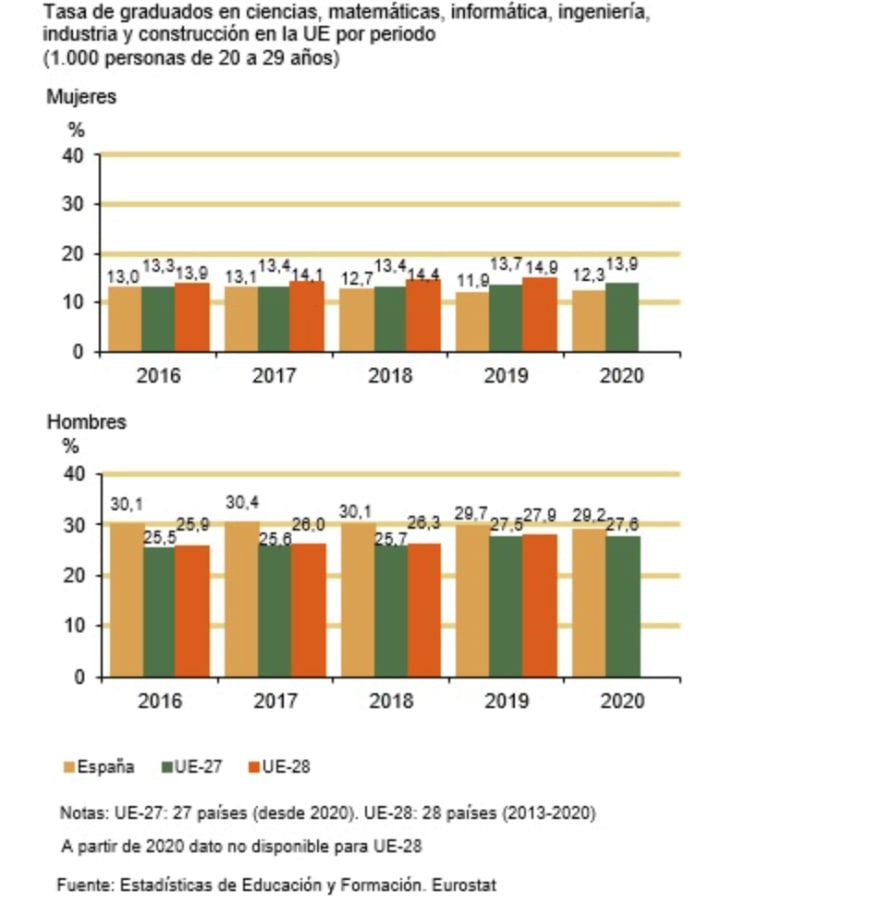Technology changes before our eyes, and sometimes we don’t realize how fast the world is advancing. After the information and telecommunications revolution, also called the “information age, which spanned the 1990s and 2000s, came the Third Industrial Revolution, characterized by highly advanced technologies and focused on the R&D sector.
The field of research and development has traditionally been dominated by men, great inventors, and scientists who have contributed to the development of mankind such as Charles Babbage, Alan Turing, John Presper, and John William. However, there are also women in programming and engineering who have made huge contributions to technology.
Women in programming and engineering
Less known are the “mothers” of modern technology, the women in programming who made their contributions, such as Ada Lovelace, a British mathematician, computer scientist, and writer who contributed to Babbage’s work the first programming system, or Grace Murray Hopper, creator of the first programming language compiler, considered today as the precursor of COBOL.
Other women in programming who have left their mark on the way the world works today are Hedy Lamarr, co-inventor of the first version of the spread spectrum that would enable long-distance wireless communications (WI-FI) . Also, Evelyn Berezin , known as the mother of word processors, who in 1968 developed the idea of a program that allowed storing and editing text, invented the first office computer, and created the first system for managing airline ticket reservations in real-time.
What would we be without these women’s contributions?
It is important to add Spanish women of reference in the field of engineering, such as Ángela Ruiz Robles, a precursor of the e-book, and the first official Spanish inventor, Pilar Careaga y Basage, the first female engineer in Spain. And last but not least, Ana María Prieto, the first programmer in Madrid (and probably in Spain) that wrote language in COBOL and machine language.
The gender gap
Despite the influence of these women in the field of technology, there is still a considerable “educational gender gap” in Spain (and also at the European level) in the disciplines of mathematics, computer science, and technology.
According to the latest Eurostat data, in 2020, female graduates in these disciplines accounted for 12.3% compared to 29.2% of graduates (the same phenomenon is repeated in other EU countries.)
Graph from INE.
This is a curious fact, since Spanish women are more likely to attend university than Spanish men, as can be seen in the graph below created by the Spanish Ministry of Education and Vocational Training.
The question then is: what is happening in the areas of technology? Is the sector masculinized? Is it complicated for women to be interested in these disciplines, due to certain traits attributed to their gender?
In any case, today is International Women ‘ s Day. The day to make this fact, this data, visible.
Today is the day on which we speak out to promote gender equality!
From Apiumhubwe want to promote the employability of women in the technology sectors, in programming, computer science, and engineering. We want to demonstrate our commitment and our fight against gender stereotypes and the educational and salary gap.




















